Now that I’ve got the negativity out of my system, I wanted to take the opportunity to celebrate some of my favorite CMX titles. I can pick ten with absolutely no difficulty at all. The difficulty is limiting myself to ten.
 Astral Project, written by marginal, illustrated by Syuji Takeya: This series is very difficult to summarize, which is almost always indicative of a title I really like. It’s about a young man who is investigating his sister’s apparent suicide and learns the secrets of astral projection. He meets others who can do the same thing, finding romance, friendship, and mystery along the way. There’s some deeply cynical social commentary and a paranoid government subplot, plus a profound fixation on improvisational jazz. In short, it’s a funky, unpredictable series with a lot on its mind.
Astral Project, written by marginal, illustrated by Syuji Takeya: This series is very difficult to summarize, which is almost always indicative of a title I really like. It’s about a young man who is investigating his sister’s apparent suicide and learns the secrets of astral projection. He meets others who can do the same thing, finding romance, friendship, and mystery along the way. There’s some deeply cynical social commentary and a paranoid government subplot, plus a profound fixation on improvisational jazz. In short, it’s a funky, unpredictable series with a lot on its mind.
 Chikyu Misaki, written and illustrated by Yuji Iwahara: Misaki and her father move back to the rural hometown of her late mother to learn that the community’s legendary lake monster is real and adorable. Also heading to the snowy hamlet are kidnappers, their vengeful victim, and a raft of stock types who transcend their formulaic origins over three frisky, sharply observed volumes. The art is gorgeous and surprising, and the characters and their interactions are absorbing.
Chikyu Misaki, written and illustrated by Yuji Iwahara: Misaki and her father move back to the rural hometown of her late mother to learn that the community’s legendary lake monster is real and adorable. Also heading to the snowy hamlet are kidnappers, their vengeful victim, and a raft of stock types who transcend their formulaic origins over three frisky, sharply observed volumes. The art is gorgeous and surprising, and the characters and their interactions are absorbing.
 Crayon Shinchan, written and illustrated by Yoshito Usui: This is one of those rare instances where I experienced the anime first. I still prefer the anime, but there’s a lot of crass, sneaky comedy in these comics. The formula is pretty basic but very productive: horrible little Shinchan shocks and mortifies the adults around him with his complete lack of anything resembling a filter. He’s curious about all of the things grown-ups dread discussing with each other, much less with kids.
Crayon Shinchan, written and illustrated by Yoshito Usui: This is one of those rare instances where I experienced the anime first. I still prefer the anime, but there’s a lot of crass, sneaky comedy in these comics. The formula is pretty basic but very productive: horrible little Shinchan shocks and mortifies the adults around him with his complete lack of anything resembling a filter. He’s curious about all of the things grown-ups dread discussing with each other, much less with kids.
 Emma, written and illustrated by Kaoru Mori: If there’s a consistent caveat in the heaps of abuse DC is receiving for their handling of CMX, it’s gratitude that we got all of Mori’s gorgeous costume drama about a shy maid and the upper-middle-class guy who loves her. Mori ended up weaving a very rich tapestry that looked not just at class but at characters, the people who lived within the Victorian strictures that threatened to keep Emma and William apart. You can read a lot about the series in the Manga Moveable Feast dedicated to it.
Emma, written and illustrated by Kaoru Mori: If there’s a consistent caveat in the heaps of abuse DC is receiving for their handling of CMX, it’s gratitude that we got all of Mori’s gorgeous costume drama about a shy maid and the upper-middle-class guy who loves her. Mori ended up weaving a very rich tapestry that looked not just at class but at characters, the people who lived within the Victorian strictures that threatened to keep Emma and William apart. You can read a lot about the series in the Manga Moveable Feast dedicated to it.
 Gon, written and illustrated by Masashi Tanaka: Gon’s structure is even simpler than Shinchan’s. A baby dinosaur wreaks anachronistic, wordless havoc on those creatures foolish enough to disturb his naps or disrupt his dinner. The series is beautifully drawn with positively eye-popping levels of detail, and it’s got terrific energy and emotional punch.
Gon, written and illustrated by Masashi Tanaka: Gon’s structure is even simpler than Shinchan’s. A baby dinosaur wreaks anachronistic, wordless havoc on those creatures foolish enough to disturb his naps or disrupt his dinner. The series is beautifully drawn with positively eye-popping levels of detail, and it’s got terrific energy and emotional punch.
 Monster Collection: The Girl Who Can Deal With Magical Monsters, illustrated by Sei Itoh, original concept by Hitoshi Yasuda/Group SNE: A comic book based on a card game that was never actually marketed in North America? Shouldn’t that have been just unbearably awful? This one defied all reasonable expectations by being sly, well-written and exciting, and maybe better for the fact that nobody had any idea what the original game was about. Even the frequent fan service is presented with winking good humor, and the characters are unfailingly likable.
Monster Collection: The Girl Who Can Deal With Magical Monsters, illustrated by Sei Itoh, original concept by Hitoshi Yasuda/Group SNE: A comic book based on a card game that was never actually marketed in North America? Shouldn’t that have been just unbearably awful? This one defied all reasonable expectations by being sly, well-written and exciting, and maybe better for the fact that nobody had any idea what the original game was about. Even the frequent fan service is presented with winking good humor, and the characters are unfailingly likable.
 Omukae Desu, written and illustrated by Meca Tanaka: I have a well-established fondness for entertainments about people who deal with dead people. This one folds in lots of stupid-funny bureaucracy and some endearing coming-of-age elements. Madoka can see dead people, and this ability lands him a part-time job with the astral agency that helps escort the recently deceased to their next incarnations. As you might expect, many of these spirits have unfinished business. As you might not expect, Madoka’s agency contact is a guy in a bunny suit who is a big believer in his employer’s ridiculous theme days. Fun stuff.
Omukae Desu, written and illustrated by Meca Tanaka: I have a well-established fondness for entertainments about people who deal with dead people. This one folds in lots of stupid-funny bureaucracy and some endearing coming-of-age elements. Madoka can see dead people, and this ability lands him a part-time job with the astral agency that helps escort the recently deceased to their next incarnations. As you might expect, many of these spirits have unfinished business. As you might not expect, Madoka’s agency contact is a guy in a bunny suit who is a big believer in his employer’s ridiculous theme days. Fun stuff.
 Penguin Revolution, written and illustrated by Sakura Tsukuba: Any shôjo series starring a girl who un-ironically declares her desire to become a civil servant is bound to get my attention. Alas, plucky Yukari must first make it through high school and work as a talent agent before she can settle into civil service. The talent agency focuses on young male idols, all of whom are forced to cross-dress during their down time to throw the press off their trails. That applies to their handlers, too. This is the kind of goofy, mildly romantic shôjo that’s very much to my taste. Warning: no actual penguins appear in this manga.
Penguin Revolution, written and illustrated by Sakura Tsukuba: Any shôjo series starring a girl who un-ironically declares her desire to become a civil servant is bound to get my attention. Alas, plucky Yukari must first make it through high school and work as a talent agent before she can settle into civil service. The talent agency focuses on young male idols, all of whom are forced to cross-dress during their down time to throw the press off their trails. That applies to their handlers, too. This is the kind of goofy, mildly romantic shôjo that’s very much to my taste. Warning: no actual penguins appear in this manga.
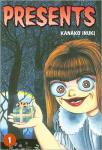 Presents, written and illustrated by Kanako Inuki: There isn’t enough shôjo horror, if you ask me, or at least enough shôjo horror that doesn’t involve obnoxious supernatural boys with lots of hair and patriarchal attitudes. Presents shows what happens when bad things happen to horrible people, which can be delightfully diverting. Mistress of Ceremonies Kurumi is probably supposed to look innocently adorable, but just looking at her gives me the shivers.
Presents, written and illustrated by Kanako Inuki: There isn’t enough shôjo horror, if you ask me, or at least enough shôjo horror that doesn’t involve obnoxious supernatural boys with lots of hair and patriarchal attitudes. Presents shows what happens when bad things happen to horrible people, which can be delightfully diverting. Mistress of Ceremonies Kurumi is probably supposed to look innocently adorable, but just looking at her gives me the shivers.
 Swan, written and illustrated by Kyoko Ariyoshi: It’s probably impossible to calculate the good karma points that will go to whoever decided to try and publish this ballet masterpiece in English. We all know the conventional wisdom that classic shôjo doesn’t sell, and I don’t think Swan ever flew off of the shelves either, but wow, was it bliss. It follows the often brutal career trajectory of a gifted young ballerina and the troupe of dancers who try to put Japan on the global dance map.
Swan, written and illustrated by Kyoko Ariyoshi: It’s probably impossible to calculate the good karma points that will go to whoever decided to try and publish this ballet masterpiece in English. We all know the conventional wisdom that classic shôjo doesn’t sell, and I don’t think Swan ever flew off of the shelves either, but wow, was it bliss. It follows the often brutal career trajectory of a gifted young ballerina and the troupe of dancers who try to put Japan on the global dance map.
There are at least five other titles that were serious squeakers for inclusion on this list, or would have been if more volumes had been published. I think just looking at these ten titles makes you realize what the folks behind CMX were able to accomplish during their too-short run. What were your favorite CMX titles? Feel free to mention them in the comments, or just heap abuse on DC, because that isn’t going to get old here for a while.



 Posted by davidpwelsh
Posted by davidpwelsh 





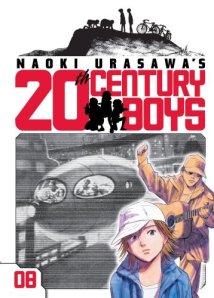



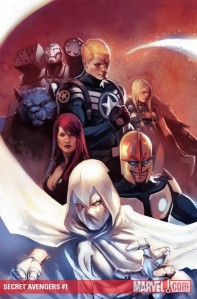
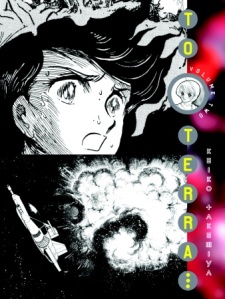
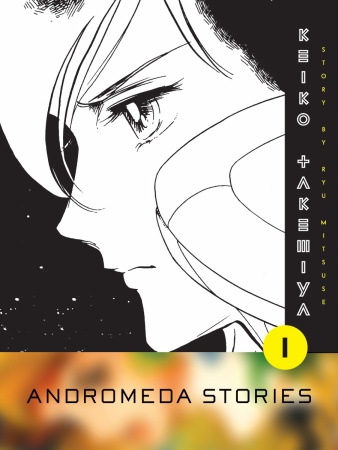
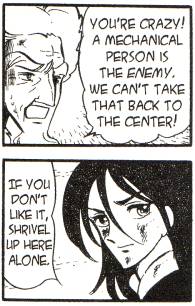


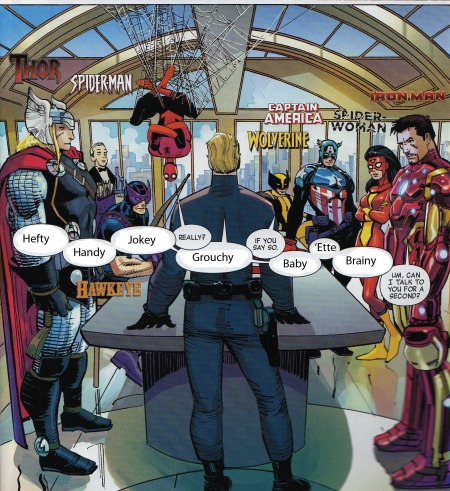


CMX-cellence
May 20, 2010Now that I’ve got the negativity out of my system, I wanted to take the opportunity to celebrate some of my favorite CMX titles. I can pick ten with absolutely no difficulty at all. The difficulty is limiting myself to ten.
There are at least five other titles that were serious squeakers for inclusion on this list, or would have been if more volumes had been published. I think just looking at these ten titles makes you realize what the folks behind CMX were able to accomplish during their too-short run. What were your favorite CMX titles? Feel free to mention them in the comments, or just heap abuse on DC, because that isn’t going to get old here for a while.